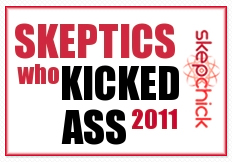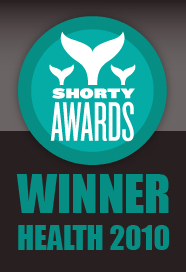Last week was World Homeopathy Awareness Week or WHAW, a time where homeopaths all over the world do their best to spam the Ten23 hashtag on Twitter and bleat “QUANTUM! IT’S QUANTUM!!” in defence of their nonsense.
If you follow the process, no doubt you’ll know who trolls the internet leaving this statement anywhere someone criticises homeopathy;
“Real is scientific homeopathy like Conventional Allopathic Medicine (CAM). Evidence-based modern homeopathy is a nano-medicine bringing big results”
Firstly, wha??
Only one person can dish up quality woo like this. It’s Not-a-Doctor Nancy Malik of course. And what exactly is “scientific homeopathy”? Best you ask Dr Malik about that.
So given that it was WHAW, many science-based bloggers and tweeters took it upon themselves to make people “aware” that homeopathy is nothing more than an expensive placebo. In most cases, the liquid or sugar pills you buy from your pharmacist in fact contain nothing at all. Thus, the catch phrase of Ten23; “Homeopathy, there’s nothing in it”.
My best mate Richard Saunders did his bit, in the form of an epic slap-down story on Adelaide’s Today Tonight where Brauer “Natural Medicine” came in for a bollocking. As Phil Plait so eloquently put it, this story was unique for the token homeopath not the token sceptic, the latter being the usual way things work on commercial television. If you haven’t seen this video, take the 10 minutes to watch it – it’s great. Richard delivers some succinct and pointed sound bites which really bring the message home (and I’m not too coy to say I was sitting off camera coaching him for this part!).
But, like many sacred cows, homeopathy is an unsinkable rubber duck and despite 200 years and 200 clinical trials, there is still no evidence that homeopathy works (see how homeopathy works here). This leaves homeopaths mumbling excuses like “RCTs don’t work for homeopathy” or “one day quantum physics will solve it”.
Do not pass go, do not collect $200.
So it was with great delight that I opened my Australian Doctor email today to find an article by Paul Smith (whom I highly respect) with the headline; “National Health and Medical Research Council (NHMRC) declares: homeopathy ‘not efficacious’”. It’s a subscription based article so I can’t copy paste it here, but I can provide a summary.
“The NHMRC’s position is…it is unethical for health practitioners to treat patients using homeopathy, for the reason that homeopathy – as a medicine or procedure – has been shown not to be efficacious.”
This is currently a draft statement, apparently drawing on several issues; claims that “homeopathic vaccinations” are an effective substitute for vaccines, recent deaths (see here and here) in Australia where homeopathy was implicated and the findings by the UK Science and Technology Committee in 2010 which concluded that the UK National Health Service should cease funding homeopathy.
This is the first time the NHMRC has spoken out against homeopathy and the implications are significant. As Paul says;
“If the public statement is formally adopted by the council, the major health insurers – Medibank Private, HCF, NIB and MBF – will have to justify why it is using taxpayers’ money to fund “unethical” homeopathic treatments.”
Three billion dollars of taxpayers money is provided every year to fund private health insurance rebates by the government and this includes homeopathy. Should the NHMRC declare it “unethical”, health funds will be under pressure to pull funding for quack remedies like homeopathy.
It’s too early to tell at this stage if this will happen, since the statement is still a draft, but it is tantalising to think that science and rationalism could win this one.
I encourage the NHMRC to formalise this statement and declare homeopathy unethical and devoid of efficacy. Of course people will still be able to buy it, but at their own expense instead of that of the tax payer.
And maybe, just maybe, this will see the end of doctors prescribing it and pharmacists selling it. And wouldn’t that be a huge win for science and scepticism.
The full article (subscription required) can be found here





